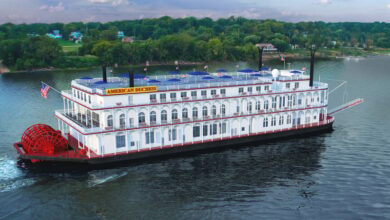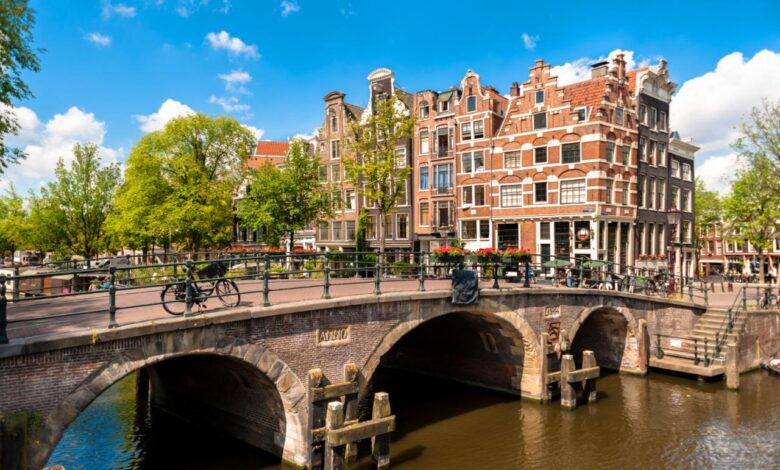
Amsterdam Canal District UNESCO Recognition
Amsterdam canal district gets UNESCO recognition, marking a significant milestone for this iconic area. The historic waterways, charming canal houses, and rich cultural heritage have now been officially recognized for their global significance. This prestigious designation promises to boost tourism, enhance preservation efforts, and further solidify Amsterdam’s position on the world stage. The detailed evaluation process, encompassing historical context, architectural features, and cultural impact, led to this well-deserved honor.
The Amsterdam Canal District’s unique blend of history and modern life, from its early development to its present-day role as a tourist destination, has been carefully examined and documented. The UNESCO recognition highlights the enduring appeal and global importance of this remarkable urban space.
Historical Context of the Amsterdam Canal District
The Amsterdam Canal District, a UNESCO World Heritage site, stands as a testament to the city’s remarkable history and urban planning prowess. Its intricate network of canals, charming houses, and rich history reflect the economic and social forces that shaped the area over centuries. This district, far from a static snapshot in time, is a living embodiment of Amsterdam’s evolution, mirroring its rise from a modest fishing village to a global trading hub.The canals themselves are not merely decorative features; they were integral to the city’s development, providing vital transport routes, defense against invaders, and access to essential resources.
Their construction and subsequent development deeply intertwined with the city’s social and economic fabric, reflecting the priorities and aspirations of the inhabitants. The canal houses, with their unique architectural styles and subtle variations, offer a fascinating glimpse into the lives of the people who lived and worked in the area.
Early Development and the Golden Age
The area’s early development was closely tied to the growth of Amsterdam as a trading port. The initial canals were dug in the 15th and 16th centuries to improve water management and facilitate trade. The first canals served practical purposes, but as the city’s prominence grew, so did the sophistication of the urban design, evolving into the iconic canal system we see today.
The city’s rise to prominence during the Dutch Golden Age (roughly 17th century) profoundly impacted the Canal District. This period saw an unprecedented influx of wealth and population, spurring the construction of impressive canal houses, many of which still stand today.
The Amsterdam Canal District’s UNESCO recognition is fantastic news for tourism. It’s a huge boost, highlighting the area’s historical charm and beauty. However, as we consider the wider global travel picture, it’s also worth noting how factors like increased airlift and cruise ship options are simultaneously helping Caribbean destinations grow, as seen in airlift and cruise ships help fuel Caribbean growth.
Ultimately, this recognition for Amsterdam further solidifies its place as a major European travel destination.
Chronological Overview of the Canal District
| Year | Event | Description |
|---|---|---|
| 1400s | Initial Canal Construction | Early canals were dug to improve water management and support growing trade. This period marked the earliest stages of the area’s development into a significant urban center. |
| 1600s (Dutch Golden Age) | Canal House Construction Boom | The influx of wealth and population fueled a period of intense canal house construction. The distinctive architecture of this era reflects the prosperity and ambition of the time. |
| 1620s | Establishment of the Herengracht | The construction of the Herengracht canal and surrounding houses cemented the canal district’s status as a prestigious and affluent residential area. |
| 1700s | Refinement and Expansion | Subsequent centuries saw the gradual refinement and expansion of the canal system, along with further development of canal houses. The architectural styles continued to evolve. |
| 1800s – 1900s | Social and Economic Shifts | The 19th and 20th centuries saw significant social and economic changes. These changes, while impacting the city as a whole, were reflected in the Canal District’s gradual adaptation to changing times. |
Social and Economic Influences
The construction and evolution of the canal houses were deeply intertwined with the social and economic conditions of the time. Wealthy merchants and prominent figures often commissioned the construction of grand canal houses, showcasing their status and prosperity. The architectural style of these houses often reflected the social and economic status of their owners. The houses displayed a wide range of architectural styles, from the more elaborate to the more modest, reflecting the diverse population and social classes of the time.
This diverse range of styles adds to the visual appeal and cultural richness of the area.
Architectural and Urban Design Features
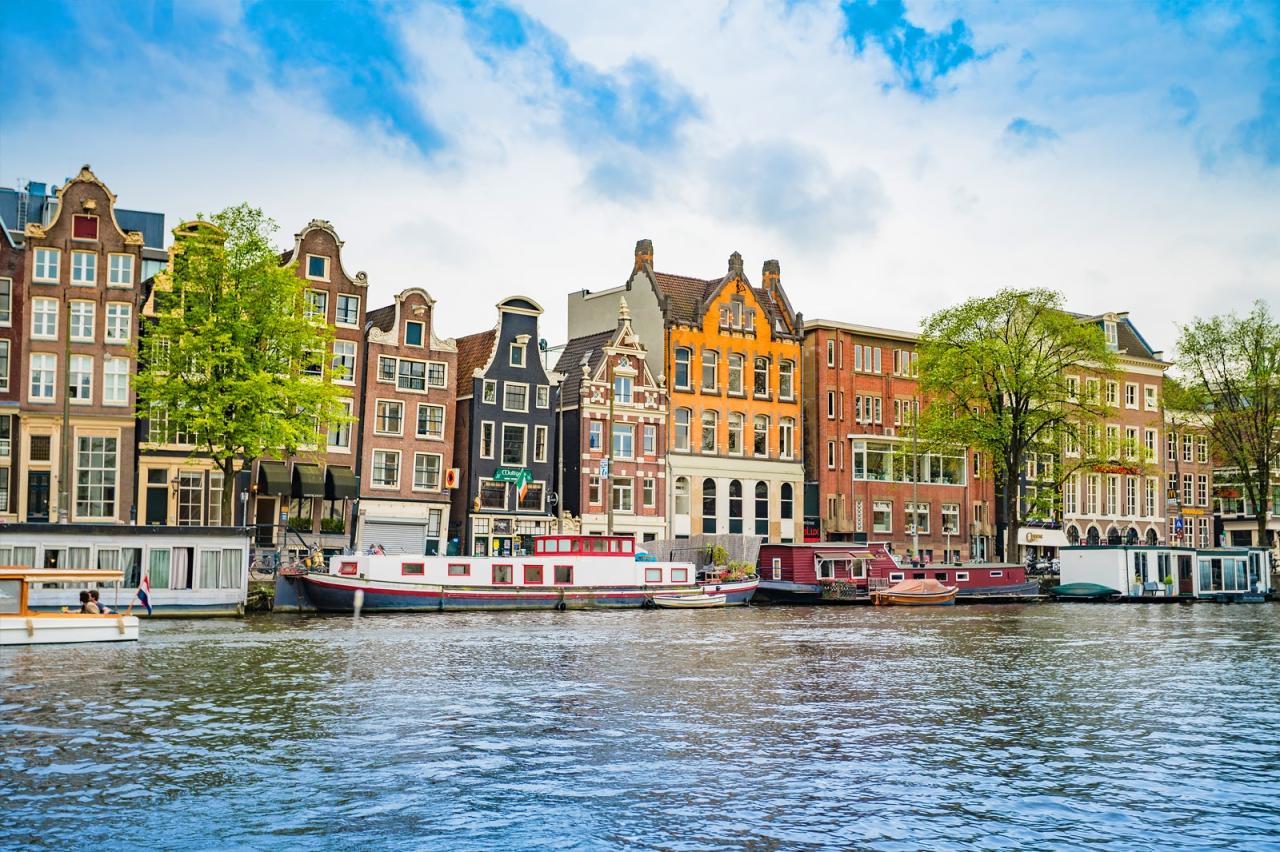
The Amsterdam Canal District’s UNESCO recognition highlights not only its historical significance but also its remarkable architectural and urban design. The canals themselves are a defining feature, shaping the district’s layout and influencing the development of its unique houses. This intricate interplay of design elements created a vibrant and enduring urban environment.The canal houses, built over centuries, showcase a fascinating evolution of architectural styles, mirroring the changing tastes and economic realities of the time.
Their design, reflecting both practicality and aesthetics, continues to captivate and inspire awe today.
Distinctive Architectural Styles
The canal houses of Amsterdam demonstrate a diverse range of architectural styles, reflecting the historical periods in which they were built. Early canal houses, often constructed in the 17th century, show the influence of Dutch Renaissance and classicist styles. These early examples are characterized by symmetrical facades and straightforward designs.
Unique Urban Design Elements
The canal system is the heart of the district’s urban design. Its intricate network of waterways not only provided essential transport but also created a unique sense of community and spatial organization. The houses, often built close together, reflect a practical approach to utilizing the available space. The presence of the canals also fostered a sense of privacy and intimacy, contributing to the unique ambiance of the district.
Canal Houses of Different Eras
Canal houses from different periods exhibit significant stylistic variations, demonstrating the changing architectural trends of each era. The 17th century, a period of significant prosperity and trade, witnessed the construction of many canal houses with ornate facades and intricate details. Later periods, particularly the 18th and 19th centuries, saw more restrained styles emerge, reflecting evolving tastes and economic realities.
This progression offers a compelling historical narrative, visually displayed in the district’s architecture.
Comparative Analysis of Canal House Facades
| Period | Style | Key Features |
|---|---|---|
| Early 17th Century | Dutch Renaissance/Classicist | Symmetrical facades, simple ornamentation, use of brick or stone. |
| Mid-17th Century | Dutch Golden Age | Ornate facades, intricate details (e.g., friezes, sculptures), gables, and use of rich materials like wood and stone. Often displayed a sense of wealth and prosperity. |
| Late 17th Century | Transitional | A blend of earlier styles, some simpler facades, yet maintaining some decorative features from the Golden Age. |
| 18th Century | Baroque/Neoclassical | More restrained facades, symmetrical designs, use of plaster, emphasis on classical elements like columns and pediments. |
| 19th Century | Neo-Gothic, Neo-Renaissance | More varied styles; incorporating elements of other historical periods; often simpler ornamentation compared to the 17th century. The use of brick was still prevalent. |
Cultural Significance and Impact: Amsterdam Canal District Gets Unesco Recognition
The Amsterdam Canal District’s UNESCO World Heritage status isn’t just about its beautiful architecture; it’s a testament to its profound cultural impact on Dutch society and the world. This isn’t just a collection of buildings; it’s a living, breathing narrative woven into the fabric of Amsterdam’s identity and a significant contributor to its global recognition. From its artistic influences to its role in shaping tourism, the Canal District holds a unique place in the hearts of locals and visitors alike.The Canal District’s rich history has profoundly shaped its cultural significance.
It wasn’t simply a place built, but a place lived, loved, and expressed through generations of artists, writers, and everyday citizens. This cultural legacy is deeply embedded in the district’s architecture, its stories, and its atmosphere.
Influence on Art and Literature
The Canal District has served as a muse for countless artists and writers. The picturesque canals, the intimate courtyards, and the historic houses have inspired countless works of art, literature, and music. The area’s atmosphere has resonated with artists across various mediums, fostering a sense of place and community. Rembrandt’s work, for example, often featured canal-side scenes, capturing the spirit of the era.
The Amsterdam Canal District’s UNESCO recognition is fantastic news for tourism! It highlights the city’s rich history and beautiful architecture. Meanwhile, American cruise lines are also making waves in the travel industry with their new agent portal, which could streamline booking processes for those interested in canal tours or related activities. American cruise lines launches agent portal.
This certainly bodes well for the future of Amsterdam’s tourism industry, further solidifying its global appeal.
This artistic connection solidified the area’s cultural importance, showcasing its unique charm and beauty to a global audience.
Shaping Amsterdam’s Identity
The Canal District is intrinsically linked to Amsterdam’s identity. It’s more than just a collection of houses; it’s a tangible representation of Amsterdam’s history, culture, and spirit. The very essence of Amsterdam, its vibrancy, and its resilience are reflected in the Canal District’s architecture and the stories it tells. This is evident in the everyday lives of residents, the festivals held along the canals, and the countless conversations held within its historic buildings.
Attracting Tourists and Global Perceptions
The Canal District’s unique beauty and cultural significance have attracted tourists from all over the world. The area’s historic charm, coupled with its vibrant atmosphere, creates a powerful draw for visitors seeking an authentic Dutch experience. This influx of tourists has profoundly impacted Amsterdam’s global image, showcasing it as a city steeped in history and culture. The Canal District has become a symbol of Amsterdam, a tangible representation of its cultural richness.
Its presence on the world stage further strengthens Amsterdam’s position as a global hub for culture and tourism.
UNESCO Recognition Process and Criteria
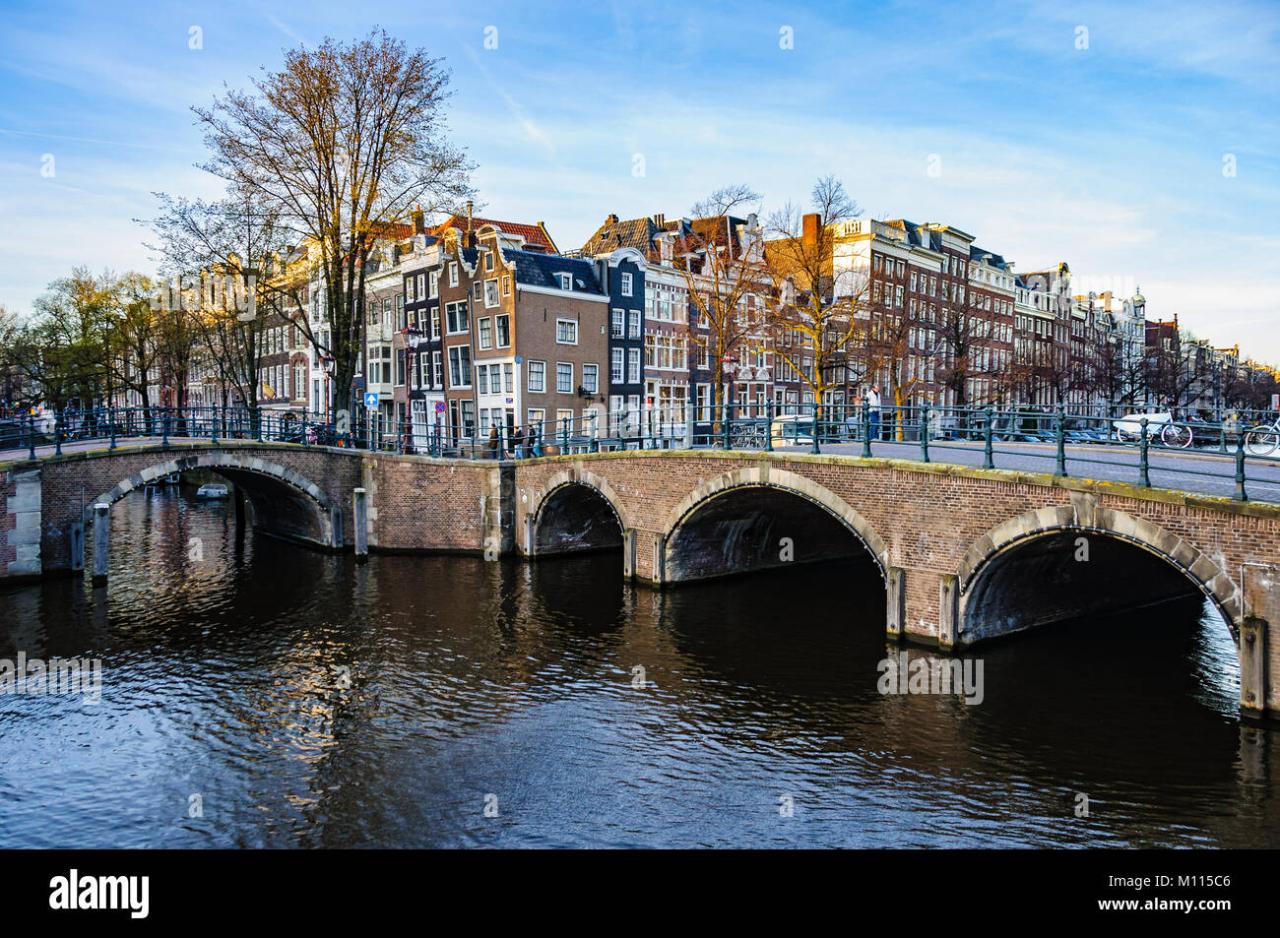
The Amsterdam Canal District’s UNESCO World Heritage recognition is a testament to its global significance. This recognition underscores the district’s unique historical, architectural, and cultural value, ensuring its preservation for future generations. The process itself is a rigorous one, demanding a deep understanding of the site’s history and its impact on the world stage.The nomination and approval of a site as a UNESCO World Heritage Site is a multi-stage process, meticulously scrutinized to meet stringent criteria.
The Canal District’s successful application exemplifies the meticulous documentation and persuasive arguments required for such recognition.
UNESCO World Heritage Nomination Process
The process begins with a thorough documentation of the site’s significance. This includes detailed historical records, architectural plans, and cultural narratives. A nomination file, meticulously crafted, is submitted to the UNESCO World Heritage Centre. This file provides a comprehensive overview of the site’s characteristics and its universal value.
Specific Criteria for Recognition
The Canal District’s recognition was based on several specific UNESCO criteria. These criteria are broadly categorized to assess the site’s value from a global perspective. The criteria evaluate the significance of the site in relation to human history, art, science, or cultural traditions.
- Criterion i: Outstanding Universal Value: The Canal District showcases a remarkable example of 17th-century urban planning and architecture. Its unique design, reflecting the economic prosperity and social structures of the time, is unmatched in its completeness and preservation. The remarkable harmony between the built environment and the natural context of the canals is a key component of its universal value.
- Criterion ii: Outstanding Example of a Type of Building: The Canal District features a remarkable concentration of 17th-century houses, showcasing various architectural styles and techniques. The preservation of these structures provides a vivid insight into the urban development and social stratification of the period. The houses stand as a testament to the architectural innovation and craftsmanship of the era.
- Criterion iii: Outstanding Example of a Settlement: The canals served as the backbone of the city’s transportation and social life. The layout of the canal system and the residential structures along them demonstrate the city’s complex societal fabric. The entire settlement, including the canals, houses, and related infrastructure, offers a unique and complete image of 17th-century urban development.
Evaluation and Selection Procedure
The nomination file undergoes a rigorous evaluation by UNESCO’s International Council on Monuments and Sites (ICOMOS). Experts from various fields assess the site’s historical significance, architectural integrity, and cultural impact. Their findings are carefully considered by the UNESCO World Heritage Committee, which ultimately decides whether to approve the nomination.
- Expert Review: ICOMOS experts, specializing in architecture, history, and preservation, review the submitted documentation, scrutinizing its compliance with UNESCO criteria. Their reports form the basis of the committee’s decision.
- Committee Evaluation: The World Heritage Committee evaluates the site’s nomination, taking into account the ICOMOS report and any supporting evidence. The committee assesses the site’s significance from a global perspective, considering its impact on human history and culture.
- Decision-Making: The committee’s decision is based on consensus, considering the site’s potential contribution to the World Heritage List. The process emphasizes the importance of safeguarding cultural heritage for future generations.
Flowchart of Nomination and Approval Process
| Step | Description |
|---|---|
| 1. Nomination Preparation | Gathering historical data, architectural plans, and cultural context. |
| 2. Submission to ICOMOS | Submitting the nomination file to the International Council on Monuments and Sites. |
| 3. Expert Review | Assessment of the site by ICOMOS experts based on UNESCO criteria. |
| 4. ICOMOS Report | ICOMOS submits a report to the World Heritage Committee. |
| 5. Committee Evaluation | World Heritage Committee reviews the site’s nomination. |
| 6. Final Decision | The committee votes to approve or reject the nomination. |
| 7. Inscription | Successful nomination results in the site being added to the World Heritage List. |
Economic and Social Impact of Recognition
UNESCO World Heritage status for the Amsterdam Canal District promises a transformative impact on the area. Beyond the intrinsic cultural and historical value, this recognition brings tangible economic and social benefits. The careful management and promotion of this heritage will be crucial to ensuring that the positive impacts are felt by the local community.The recognition will act as a powerful magnet, drawing in tourists from around the world, boosting the local economy, and creating opportunities for the residents.
However, careful planning is essential to ensure that the influx of tourism doesn’t overwhelm the local community or compromise the authenticity of the area. The social impact will be multifaceted, impacting everything from local businesses to community relations.
Potential Economic Benefits
The Canal District’s recognition as a UNESCO World Heritage site will undoubtedly attract a significant increase in tourism. This influx of visitors translates to increased revenue for hotels, restaurants, shops, and other businesses within the area. The tourism industry, from guided tours to souvenir shops, will experience a surge in demand. Amsterdam already benefits from high levels of tourism, but the UNESCO recognition will likely accelerate this growth.
The example of other World Heritage sites shows a strong correlation between recognition and increased visitor numbers, leading to a boost in local economies.
Tourism and Related Industries
The Canal District will become a prime destination for tourists seeking cultural experiences and architectural marvels. This will lead to increased demand for guided tours, boat trips, and accommodation. Businesses related to the tourism sector, including transportation services and local craft shops, will also see a surge in demand. For example, the Taj Mahal in India saw a significant increase in tourism following its UNESCO recognition, and this directly translated into revenue for local businesses.
Potential Social Consequences
The recognition will bring numerous positive social consequences, including a stronger sense of community pride and enhanced cultural preservation efforts. However, potential negative impacts, such as gentrification and increased pressure on local resources, are also possible. Careful planning and community engagement are essential to mitigate these risks and ensure that the benefits are distributed equitably.
Table of Potential Impacts, Amsterdam canal district gets unesco recognition
| Impact Category | Potential Impacts |
|---|---|
| Economic Impacts | Increased tourism revenue |
| Job creation in tourism-related industries | |
| Investment in infrastructure and businesses | |
| Social Impacts | Increased community pride and cultural preservation |
| Potential for gentrification and displacement of residents | |
| Enhanced community engagement and cultural exchange |
Preservation and Future of the Canal District
The UNESCO recognition of Amsterdam’s Canal District marks a significant milestone, solidifying its global importance. This recognition, however, comes with a responsibility to preserve this irreplaceable heritage for future generations. Maintaining the unique charm and historical character of the area requires a multifaceted approach that balances preservation with the demands of a modern urban environment.The Canal District faces numerous challenges in safeguarding its historical fabric.
These include balancing tourism with local residents’ needs, adapting to changing economic conditions, and managing the inevitable wear and tear of time and use. Simultaneously, there are remarkable opportunities to enhance the area’s appeal and ensure its long-term viability.
Challenges in Preservation
The influx of tourism, while boosting the local economy, can also strain the delicate balance of the Canal District. Overcrowding in popular areas and the potential for disrespectful behavior can negatively impact the experience for both residents and visitors. Balancing tourism with the needs of local communities and preserving the quiet character of residential areas requires careful planning and proactive management.
The Amsterdam Canal District’s UNESCO World Heritage recognition is fantastic news, highlighting its historical and architectural significance. However, recent news about the ambassadors sells marine division raises questions about the future of maritime activities in the area. Despite this, the Canal District’s global recognition continues to cement its place as a must-see destination for travelers.
Moreover, the inherent challenges of adapting historic buildings to modern needs while respecting their architectural integrity are considerable. Maintaining the historic character often clashes with modern demands for accessibility, safety, and functionality.
Opportunities for Enhancing Preservation
Innovative strategies can foster a sustainable future for the Canal District. Community engagement is vital, as residents play a crucial role in preserving the area’s unique atmosphere. Local initiatives, such as heritage tours, workshops, and volunteer programs, can foster a sense of ownership and pride. Encouraging sustainable tourism practices, promoting responsible visitor behavior, and providing clear guidelines for preservation are essential elements in this approach.
Governmental Role in Preservation
Effective preservation relies on a strong partnership between the government and the community. Implementing strict building regulations that maintain the historic aesthetic while accommodating modern needs is paramount. Investing in infrastructure that supports the area’s unique character, such as improved public transport and green spaces, can enhance the quality of life for residents and visitors. Government support for restoration projects and the creation of accessible and educational facilities is also crucial.
Community Engagement Strategies
Engaging the local community in preservation efforts is vital. Establishing resident advisory boards, holding public consultations on development proposals, and promoting awareness campaigns on historical preservation are essential steps. Supporting local businesses and artisans who contribute to the area’s unique character through traditional crafts and services is another important strategy. These measures foster a sense of ownership and encourage responsible behavior, contributing to the long-term preservation of the Canal District.
The Amsterdam canal district’s UNESCO recognition is fantastic news, highlighting its historical significance. However, recent events, like the impact of Hurricane Sandy, have forced airlines and cruise lines to adjust their schedules, as detailed in this article. Thankfully, these disruptions shouldn’t affect the beauty of the canals, ensuring tourists can still appreciate this UNESCO World Heritage site.
Initiatives for Enhanced Preservation
- Establishing a dedicated Canal District Preservation Fund: This fund would provide financial resources for restoration projects, maintenance, and educational initiatives. This fund could be supported through public donations, corporate sponsorships, and possibly a small tax on tourism activities.
- Developing a comprehensive Canal District Heritage Trail: This trail could feature interactive exhibits, historical markers, and guided tours highlighting the area’s significant architectural, historical, and cultural aspects. This could be a collaborative effort between the local government, historical societies, and community organizations.
- Promoting sustainable tourism initiatives: Encouraging eco-friendly practices among tourists, such as cycling and public transport, and promoting ethical tourism through responsible businesses and initiatives could significantly reduce the environmental impact.
- Enhancing the accessibility of historic buildings: While respecting the original architecture, modifications could be made to enhance accessibility for visitors with disabilities, creating a more inclusive experience for everyone.
These initiatives, when implemented effectively, can significantly enhance the preservation efforts for the Amsterdam Canal District, ensuring its unique charm endures for generations to come.
Comparison with Other UNESCO Sites
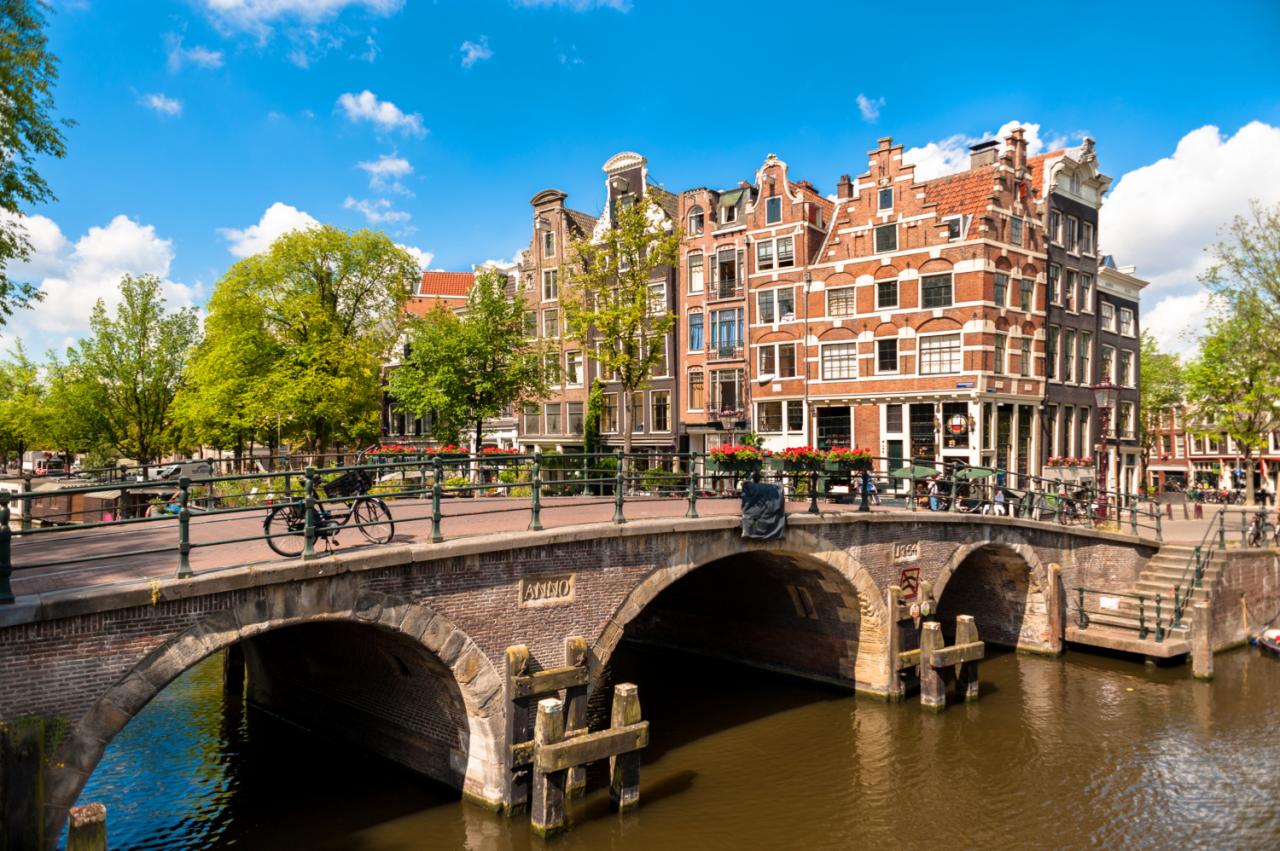
The Amsterdam Canal District’s UNESCO recognition places it alongside a prestigious collection of European heritage sites. Understanding its unique characteristics in comparison to other sites provides a deeper appreciation for its significance and the implications of its inclusion in the global heritage network. This comparison highlights both the shared and distinct features of these sites, offering valuable insights into the preservation of cultural heritage.
Similarities and Differences in Historical Significance
The Amsterdam Canal District, like many UNESCO World Heritage sites, showcases a rich tapestry of history. It reflects periods of significant societal, economic, and political change. Many other European sites, such as the historic city centres of Prague or Kraków, also embody the historical evolution of their respective regions. However, the Amsterdam Canal District’s particular significance lies in its embodiment of the Dutch Golden Age, a period of remarkable economic and artistic flourishing.
This contrasts with other sites, like the Alhambra in Spain, which primarily represent a specific architectural style and cultural period rather than a multifaceted historical narrative.
Architectural Styles and Urban Design Features
The architectural styles of UNESCO sites exhibit diverse influences and evolutionary paths. The Canal District showcases a blend of Dutch Renaissance, Baroque, and classicism, reflecting its evolving architectural trends. Similarly, the medieval city walls of Carcassonne or the Roman aqueducts of Segovia represent distinctive architectural styles, but with a narrower focus on specific periods and building techniques. The Canal District’s integration of canals, houses, and urban planning exemplifies a unique approach to urban development, a distinct characteristic that sets it apart from other sites.
Its meticulous integration of waterways into the city fabric, reflecting a strong practical and aesthetic design approach, is unparalleled.
Cultural Impact and UNESCO Recognition Process
The cultural impact of UNESCO-recognized sites is substantial, often serving as vital links to the past and inspiring future generations. The Canal District’s recognition is expected to amplify its cultural significance, attracting tourists, scholars, and promoting its artistic and cultural heritage. Other sites like the Sagrada Família in Barcelona, despite their varied historical and architectural styles, share a common thread of global recognition.
The UNESCO recognition process, although consistent across sites, requires each to meet specific criteria. These criteria focus on the site’s exceptional universal value, its historical and cultural importance, and its integrity.
Comparison Table: Amsterdam Canal District vs. Kraków
| Site | Historical Significance | Architectural Style | UNESCO Recognition |
|---|---|---|---|
| Amsterdam Canal District | Embodiment of the Dutch Golden Age, demonstrating economic and artistic flourishing; urban development and water integration. | Dutch Renaissance, Baroque, and classicism, integrated with canal system. | Recognized for its exceptional universal value, historical and cultural importance, and integrity. |
| Kraków | Rich history, medieval and Renaissance architecture; historic city centre, vibrant cultural centre. | Medieval, Renaissance, and Baroque architectural styles. | Recognized for its exceptional universal value, historical and cultural importance, and integrity. |
Potential Threats and Mitigation Strategies
The Amsterdam Canal District’s UNESCO recognition marks a significant milestone, but preservation requires proactive measures to address potential threats. These threats range from environmental concerns to the pressures of tourism and development. Effective mitigation strategies are crucial to ensure the district’s unique character and historical integrity endure for future generations.
Identifying Potential Threats
The Amsterdam Canal District, with its rich history and architectural beauty, faces a multitude of potential threats. Pollution from various sources, including air and water contamination, can gradually degrade the district’s aesthetic appeal and impact the health of the environment. Furthermore, the ever-increasing popularity of tourism can lead to overcrowding, negatively affecting the tranquility and authenticity of the area.
Gentrification, driven by rising property values and changing social dynamics, poses a threat to the district’s historic character and potentially displaces long-term residents. Finally, inadequate infrastructure planning can result in unwanted changes to the canal’s flow, the streets’ layout, or the very fabric of the neighbourhood.
Wow, the Amsterdam canal district’s UNESCO recognition is fantastic news! It’s a beautiful area, and it’s great to see it getting this prestigious honor. Speaking of beautiful places, have you ever considered experiencing luxury on a cruise ship? For a truly regal experience, check out aboard Regal Princess atrium and spa are front and center – the details are simply amazing! The historic charm of the canal district certainly shines through in its recognition, and this will only draw more tourists, which is awesome for the city’s economy.
Mitigation Strategies for Environmental Threats
Environmental degradation is a major concern. Stricter emission regulations, coupled with the promotion of sustainable transportation options, can significantly reduce air pollution. Investing in advanced wastewater treatment facilities and promoting responsible waste management practices can help combat water pollution. Implementing green infrastructure initiatives, such as parks and green roofs, can improve air quality and create aesthetically pleasing environments.
Additionally, the implementation of stricter building codes and environmental impact assessments for new developments is essential to prevent further degradation.
Mitigation Strategies for Tourism Overload
Overtourism can negatively impact the Canal District’s atmosphere and character. Implementing visitor management strategies, including visitor quotas and timed entry systems, can help regulate the flow of tourists. Encouraging responsible tourism practices through education and awareness campaigns can encourage visitors to respect the area’s historical significance and unique charm. Promoting alternative tourist attractions and experiences beyond the most popular spots can distribute the tourist load more evenly.
Mitigation Strategies for Gentrification
Gentrification, while potentially bringing economic benefits, can lead to the displacement of long-term residents. Establishing affordable housing initiatives, such as subsidized housing programs or co-ops, can help maintain the diversity and character of the neighbourhood. Implementing policies to control property values and development standards can help retain the area’s historic charm. Promoting community engagement and supporting local businesses can help foster a sense of belonging and prevent displacement.
Mitigation Strategies for Infrastructure Issues
Infrastructure planning plays a critical role in maintaining the canal district’s historical integrity. Investing in sustainable and efficient public transportation systems can reduce traffic congestion and pollution. Maintaining and restoring the existing canal infrastructure is crucial to preserve its historical character and functionality. Stricter regulations and oversight for new developments will ensure that any changes are carefully considered and do not negatively impact the existing infrastructure.
Examples of Successful Preservation Strategies
Several historical areas have successfully implemented preservation strategies to mitigate similar threats. For instance, the historic city of Charleston, South Carolina, has employed zoning regulations to preserve its unique architecture and streetscapes. Similarly, the preservation of the historic city centres in many European cities demonstrates the success of heritage-conscious urban planning and investment. These examples demonstrate the importance of proactive planning and community involvement in preserving historical areas.
Specific Measures to Address Potential Threats
- Pollution Control: Implementing stricter emission standards for vehicles and industries, investing in public transportation, and promoting the use of electric vehicles.
- Tourism Management: Implementing visitor quotas, promoting responsible tourism, and developing alternative tourist experiences to distribute visitor traffic.
- Gentrification Mitigation: Establishing affordable housing initiatives, implementing zoning regulations to control property values, and promoting local businesses.
- Infrastructure Preservation: Investing in the maintenance and restoration of the canal infrastructure, upgrading public transportation, and incorporating sustainable design principles into new developments.
Closure
In conclusion, the Amsterdam Canal District’s UNESCO recognition is a testament to its enduring beauty and cultural significance. This prestigious honor promises to bring about positive changes, from boosting tourism to inspiring preservation initiatives. The future of this historic district looks bright, poised to continue its rich history while adapting to the demands of a modern world. It will be fascinating to observe the long-term impacts of this recognition on the district’s economic, social, and cultural landscape.
FAQ Summary
What are some potential negative impacts of the UNESCO recognition?
While UNESCO recognition often brings positive economic benefits, potential negative impacts include increased tourism pressure, leading to potential strain on local resources and increased costs for residents. Gentrification, a common concern with historic areas, is another possible side effect. Careful planning and community engagement will be essential to mitigate these potential downsides.
How will the UNESCO recognition affect tourism in Amsterdam?
The recognition is expected to significantly increase tourism to the canal district. More tourists will undoubtedly flock to experience the area’s historical charm and architectural beauty. This increased influx could potentially boost the local economy, creating jobs and opportunities in related industries, but careful management of the influx is necessary to avoid negative impacts.
What are the key criteria for UNESCO World Heritage status?
UNESCO World Heritage sites are chosen based on their outstanding universal value. This value can be tied to cultural significance, historical importance, or a combination of both. The Amsterdam Canal District likely met criteria related to its unique architectural style, historical development, and cultural influence on Dutch society.

